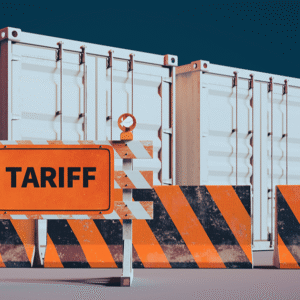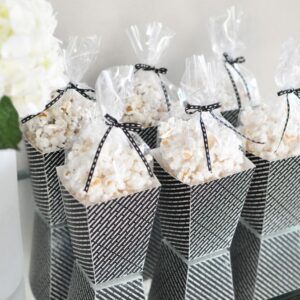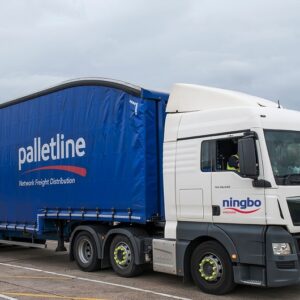You’re standing in a bustling market, fingers brushing against a stack of fabrics. There’s soft cotton, sleek polyester, cozy wool, and luxurious silk. Your mind races: Which one’s right for my summer dress? Or that winter coat? Suddenly, the shopkeeper grins, Depends on what you need, my friend! And he’s spot-on. Fabrics aren’t just cloth—they’re the heart of every garment, curtain, or couch cover, each with its own personality. But how do you choose? This blog lays it all out, comparing cotton, polyester, wool, and silk side by side to help you find the perfect fit for your needs. Whether you’re stitching a masterpiece or sourcing from fabric suppliers, let’s unravel the textile puzzle and find your ideal match!
What Makes Cotton a Crowd Favorite?
Cotton, grown from the cotton plant, is a natural fiber loved for its softness and breathability, making it a staple for many projects.
- Comfortable Texture – Cotton’s smooth, gentle fibers feel great against the skin, ideal for everyday wear like T-shirts or bed sheets.
- Breathable Structure – Its airy weave allows air circulation, keeping you cool in hot climates like Pakistan’s summers.
- Absorbent Nature – Cotton soaks up moisture, making it perfect for towels, bathrobes, and summer clothing that needs to stay dry.
- Widely Available – As a major cotton producer, Pakistan offers abundant supply through trusted cotton suppliers for various industries.
Why Choose Polyester for Durability?
Polyester is a petroleum-based synthetic fibre that is as strong and low-maintenance as natural textiles.
- Long-Lasting Wear – Polyester resists stretching and fraying, ensuring garments like jackets or upholstery stay intact over time.
- Wrinkle Resistance – It holds its shape without creasing, making it a practical choice for travel clothes or curtains.
- Quick-Drying Ability – Unlike cotton, polyester sheds water fast, ideal for sportswear or outdoor gear exposed to moisture.
- Budget-Friendly Option – Its affordability makes it accessible for large-scale projects.
The right fabric isn’t just about feel—it’s about how it fits your life’s demands.
Is Wool the Best for Warmth?
Wool, sourced from sheep, is a natural fiber prized for its insulating properties, perfect for colder seasons.
- Superior Insulation – Wool traps air, keeping you warm even in damp conditions, ideal for sweaters, scarves, and blankets.
- Natural Elasticity – Its stretchy fibers return to shape, preventing sagging in coats or socks after repeated use.
- Moisture-Wicking – Wool absorbs moisture without feeling wet, keeping wearers dry during outdoor activities or chilly weather.
- Luxurious Feel – Fine wools like Merino offer a soft, non-itchy texture, blending comfort with practicality for high-end garments.
What Sets Silk Apart?
Silk, produced by silkworms, is a natural fiber known for its smooth texture and elegant appearance, often reserved for special uses.
- Glossy Sheen – Silk’s natural luster gives dresses, scarves, and ties a refined, eye-catching finish for formal occasions.
- Lightweight Comfort – Its fine threads feel featherlight, offering a delicate touch for eveningwear or lingerie.
- Temperature Regulation – Silk keeps you cool in heat and warm in cold, though it’s less insulating than wool.
- Delicate Care – Silk requires gentle washing to maintain its sheen, making it less practical for everyday items.
Comparing Cotton, Polyester, Wool, and Silk
|
Feature |
Cotton | Polyester | Wool |
Silk |
| Comfort | Soft, breathable | Smooth, less breathable | Warm, can be itchy | Silky, lightweight |
| Durability | Strong, wears over time | Very durable, resists wear | Durable with care | Delicate, prone to damage |
| Breathability | Excellent, ideal for heat | Poor, traps heat | Moderate, warm | Good, regulates temperature |
| Maintenance | Machine wash, may shrink | Easy, machine wash | Hand wash, delicate | Hand wash, high care |
| Cost | Moderate | Low | Higher | Expensive |
| Best Use | Everyday wear, towels | Sportswear, upholstery | Winter clothing, blankets | Formal wear, scarves |
Which Fabric Suits Your Project?
Choosing the right fabric depends on the project’s purpose, climate, and care requirements.
- Everyday Clothing – Cotton shines for T-shirts, jeans, and casual dresses due to its comfort and breathability, especially in Pakistan’s warm climate.
- Activewear – Polyester’s durability and quick-drying nature make it ideal for gym clothes, swimsuits, or outdoor jackets.
- Winter Gear – Wool’s warmth and moisture-wicking ability are perfect for coats, mittens, and heavy blankets in colder regions.
- Special Occasions – Silk’s elegant sheen suits wedding gowns, ties, or decorative pillowcases, adding a touch of luxury.
A fabric’s true strength lies in how well it matches your needs, from cozy nights to sunny days.
How Fabrics Perform in Pakistan’s Climate
Pakistan’s diverse climate, from scorching summers to chilly winters, influences fabric choices for both locals and industries relying on fabric suppliers.
- Hot Summers – Cotton’s breathability makes it a top pick for kurtas, shalwar kameez, and lightweight bedding to stay cool.
- Humid Areas – Polyester’s quick-drying properties suit coastal regions, where moisture resistance is key for clothing and furnishings.
- Cold Winters – Wool dominates in northern areas, providing warmth for shawls, sweaters, and traditional woolen caps.
- Year-Round Elegance – Silk is favored for formal wear like sarees or suits, offering comfort across seasons with careful maintenance.
Environmental Impact of Fabric Choices
Each fabric has an ecological footprint, a key consideration for sustainable textile decisions.
- Cotton – Biodegradable but water-intensive; organic cotton, available from some cotton suppliers, reduces pesticide use and environmental strain.
- Polyester – Non-biodegradable and derived from petroleum, contributing to microplastic pollution, though recycled polyester is a greener option.
- Wool – Renewable and biodegradable, but sheep farming requires land and produces methane, impacting sustainability efforts.
- Silk – Biodegradable with a lower water footprint, but silkworm harvesting raises ethical concerns for some eco-conscious consumers.
Tips for Choosing Fabric Suppliers in Pakistan
Selecting a reliable supplier ensures you get the right fabric for your needs, whether for personal projects or industrial production.
- Wide Selection – Look for suppliers offering cotton, polyester, wool, and silk in various weights, colors, and finishes to suit diverse projects.
- Consistent Quality – Trusted fabric suppliers in Pakistan provide tested materials to ensure durability and performance in finished goods.
- Local Expertise – Suppliers familiar with Pakistan’s textile market can recommend fabrics suited to local climates and cultural preferences.
- Flexible Options – Choose suppliers with both wholesale and retail availability to cater to businesses, designers, and individual crafters.
A great fabric supplier doesn’t just sell cloth—they help you weave your vision into reality.
Caring for Your Fabrics
Proper care extends the life of your textiles, keeping them functional and beautiful.
- Cotton – Machine wash with mild detergent; air dry or low-heat tumble to prevent shrinking and maintain softness.
- Polyester – Machine wash and dry on low; its low-maintenance nature resists wrinkles and fading even with frequent cleaning.
- Wool – Hand wash in cold water with gentle soap, lay flat to dry to avoid stretching, and store away from moisture to prevent mildew.
- Silk – Hand wash or dry clean, avoid harsh detergents, and iron on low heat to preserve its delicate sheen and texture.
Wrapping Up
Choosing the right fabric—cotton, polyester, wool, or silk—depends on comfort, durability, and the project at hand. Cotton offers breathability for daily wear, polyester delivers low-maintenance strength, wool provides warmth, and silk adds elegance. In Pakistan, where textiles drive both tradition and innovation, fabric suppliers ensure a steady flow of materials for every need. Whether you’re designing a summer outfit, upholstering furniture, or crafting a gift, understanding these fabrics helps you make smart choices. Ready to start your next textile project? Connect with a trusted supplier and let your creativity take shape!




